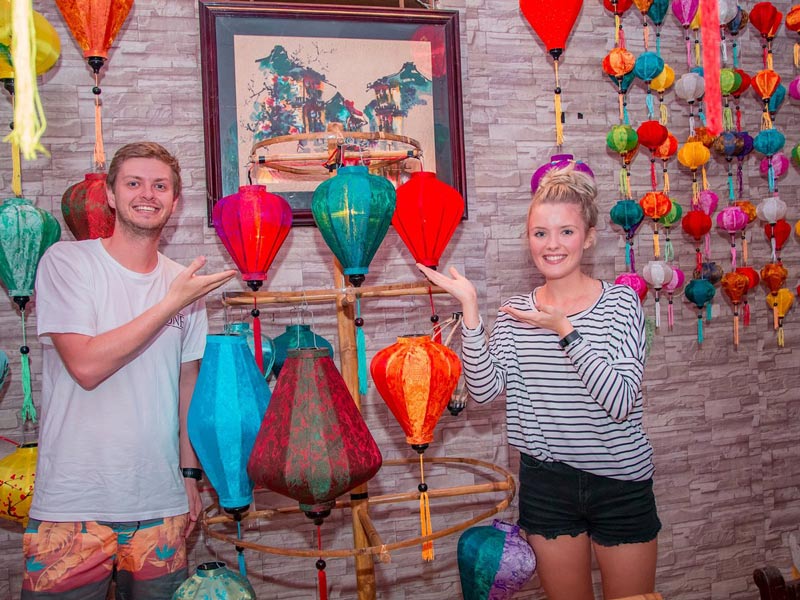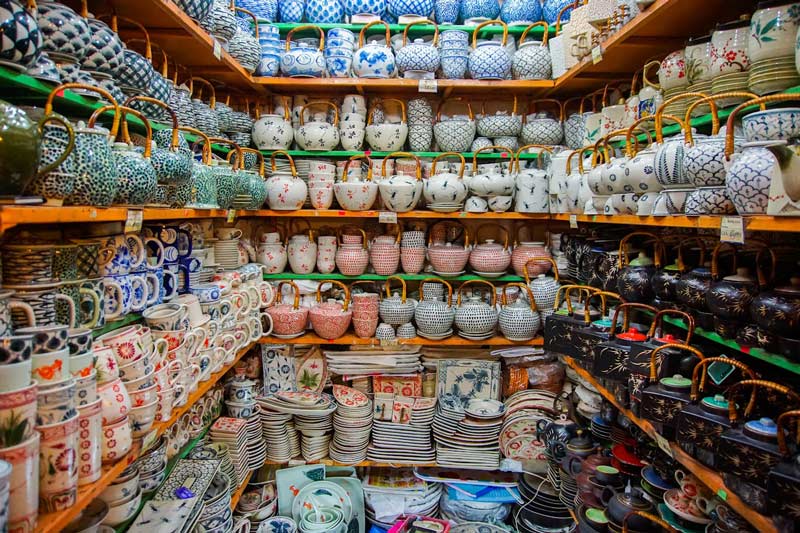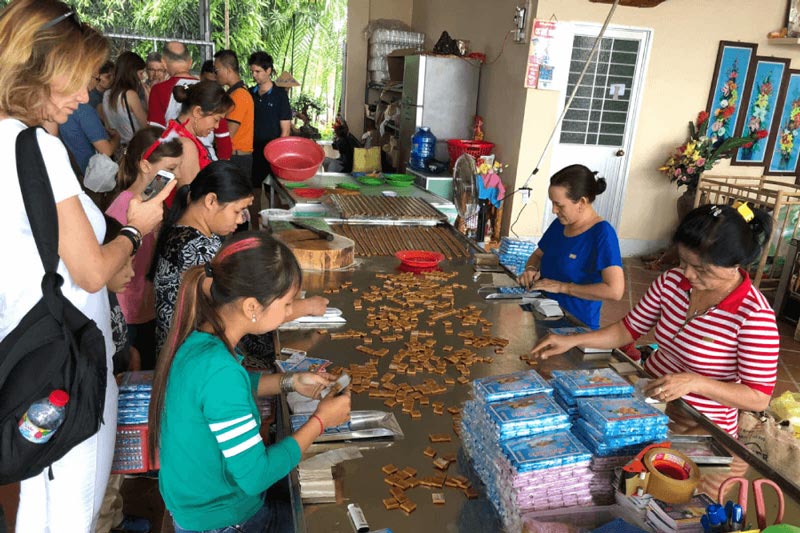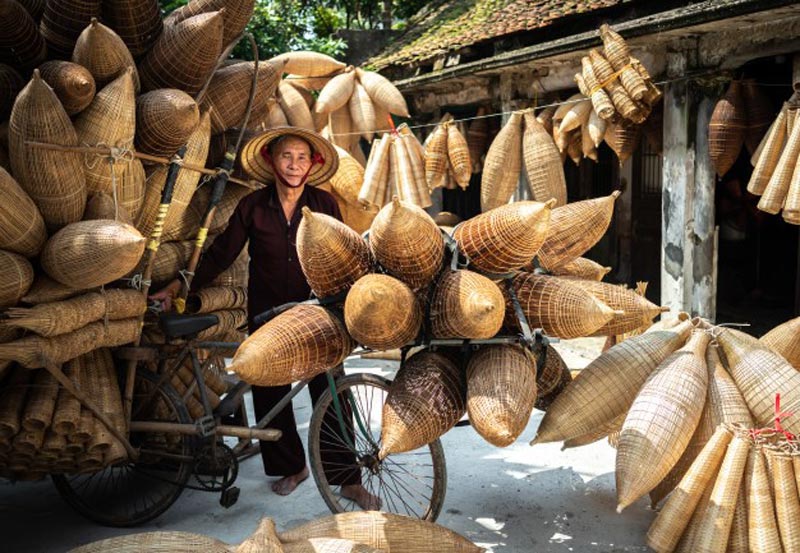Vietnam's landscape is not only shaped by its lush nature and historical landmarks but also by its rich tapestry of traditional crafts that have been passed down through generations. These handicraft villages, each with their own unique heritage and artisanal skills, offer a glimpse into the country's vibrant culture and the meticulous artistry of its people. Visiting these villages is not just a journey through the scenic beauty of Vietnam; it's an immersive experience into a world where ancient techniques and contemporary creativity meet.

Venturing into the heart of a Vietnamese Handicraft Village offers a journey back in time where traditional techniques and ancestral wisdom manifest in every creation. These villages, often tucked away from the bustling city life, are sanctuaries of heritage and craftsmanship. Here's what to expect during your visit:
Witnessing Time-honored Techniques: Prepare to be captivated as you observe artisans at work, their hands moving with precision and grace honed over generations. From weaving bamboo to crafting delicate ceramics, these masters preserve techniques that have been passed down through the ages. It's not just about the final product but the story, the dedication, and the culture that breathes life into each piece.
Engaging in Craft Workshops: Many villages offer the opportunity for visitors to immerse themselves further by participating in craft workshops. Whether it's painting a piece of pottery or weaving a basket, these hands-on experiences provide a rare chance to step into the shoes of an artisan. It's optional but highly recommended for those who wish to connect deeper with the village's cultural essence.
Discovering Unique Souvenirs: Unlike conventional tourist shops, handicraft villages offer souvenirs that are truly one-of-a-kind. Directly from the source, these items carry the soul of the village and the individuality of the artisan. They serve not just as mementos but as stories you can bring home.
Immersing in Local Culture: Beyond the crafts, these villages offer a glimpse into the Vietnamese way of life. Stroll through the lanes, interact with the locals, and perhaps enjoy a traditional meal. It's an experience that enriches not just your travel diary but your understanding of Vietnam's rich cultural tapestry.
In essence, a visit to a Vietnamese Handicraft Village is an invitation to embrace the beauty of tradition, creativity, and community. It's a journey that offers more than just sights - it's about connections, memories, and the timeless art of craftsmanship.

Bat Trang Ceramic Village (Hanoi)
Nestled on the outskirts of Hanoi, Bat Trang Ceramic Village is a testament to the enduring art of Vietnamese pottery and ceramics. With a history that spans several centuries, this village has become synonymous with high-quality ceramic products. The artisans here skillfully craft everything from delicate teacups to ornate vases, each piece adorned with traditional Vietnamese motifs.
Van Phuc Silk Village (Hanoi)
Van Phuc Silk Village, located just a short drive from the bustling streets of Hanoi, is a sanctuary of silk production. Known for its luxurious and intricately woven silk fabrics, the village has a storied history dating back more than a thousand years. The shimmering textiles produced here are sought after for their quality and beauty, making them a favorite for traditional Vietnamese attire as well as for fashion designers globally.
Quang Phu Cau Incense Village (Hanoi)
A visit to Quang Phu Cau Incense Village is an olfactory adventure. This village specializes in the craft of incense making, a tradition that is both spiritual and artistic. The vibrant colors of the incense sticks, carefully laid out to dry, create a picturesque scene against the backdrop of this quaint village. Beyond its visual allure, the village plays a crucial role in supplying incense for religious ceremonies and offerings across Vietnam.

Bau Truc Pottery Village (Ninh Thuan)
Venture into the heart of Ninh Thuan Province to find Bau Truc, the oldest pottery village in Southeast Asia. The pottery here stands out for its unique method of production, where artisans use their hands and simple tools to shape the clay, foregoing the pottery wheel. The designs reflect the Cham people's culture, with intricate patterns and motifs inspired by nature and mythology.
Yen Thai Poonah-paper Village (Quang Binh)
Yen Thai Village holds a special place in Vietnam's cultural heritage as one of the few remaining places where traditional poonah paper is made. This handmade paper, crafted from the bark of the poonah tree, has a rich history dating back centuries. It was once used for writing and printing classical literature and folk art. Today, artisans in Yen Thai are keeping this tradition alive, producing paper that is prized for its durability and unique texture.
Hoi An Silk Village (Hoi An)
Hoi An, a city known for its well-preserved Ancient Town, is also home to the Hoi An Silk Village. This village is a living museum dedicated to the art of silk weaving, an integral part of Vietnam's silk industry. Visitors can explore the mulberry gardens, witness the delicate process of silk worm rearing, and observe artisans at work on traditional looms. The silk produced here is of exceptional quality, used to make a variety of garments and textiles that reflect the vibrant culture of Hoi An.

Tan Chau Black Silk Village (An Giang)
In the heart of the Mekong Delta, Tan Chau Village is famous for a unique kind of silk known as "silk mat." This silk is distinguished by its black color, achieved through a natural dyeing process that uses the bark of the mac nua tree. The resulting fabric is not only beautiful but also incredibly durable, with a distinctive sheen that sets it apart from other silks. The weavers of Tan Chau are masters of their craft, creating textiles that are highly sought after for traditional Vietnamese clothing and modern fashion alike.
Ben Tre Coconut Candy Village (Ben Tre)
Ben Tre Province is often called the "land of coconuts," and it's in this lush landscape that you'll find villages dedicated to the art of coconut candy making. Coconut candy, or "keo dua," is a beloved treat in Vietnam, known for its sweet, milky flavor and chewy texture. Artisans in these villages have honed the candy-making process to an art form, cooking the coconut milk with sugar and flavorings before cutting it into small, bite-sized pieces.
Ba Dai Ship-crafting Village (Dong Thap)
The tradition of wooden boat building is alive and well in Ba Dai Village, located in the waterways of the Mekong Delta. Here, craftsmen build and repair boats using age-old techniques passed down through generations. These wooden boats are essential for life in the Delta, used for transportation, fishing, and even as floating homes. Observing the boat builders at work is a fascinating experience, showcasing the skill and precision required to create these vital vessels.

Exploring the handicraft villages of Vietnam offers a unique glimpse into the country's rich cultural tapestry. These villages, where traditional skills have been passed down through generations, are not just tourist destinations; they are living museums of Vietnamese heritage and craftsmanship. To ensure that your visit is both enjoyable and respectful, here are some essential tips to keep in mind:
The charm of a Vietnamese handicraft village lies in its narrow alleys, rustic homes, and workshops filled with artisans at work. These settings invite leisurely strolls to truly appreciate the beauty and intricacy of the local crafts. However, the terrain can be uneven, with cobblestone paths or areas that may require standing for extended periods to observe artisans at work. Therefore, wearing comfortable shoes is a must. Opt for sneakers or closed-toe shoes that offer support and protection, ensuring that you can navigate the village with ease and focus on the beauty around you.
Bargaining is a part of the shopping experience in Vietnam, including in handicraft villages. Artisans often price their goods with the expectation of haggling. However, it's crucial to approach bargaining with respect and politeness. Recognize the skill, time, and effort that goes into each piece, and use bargaining as a way to arrive at a fair price that honors the artisan's work while giving you a sense of satisfaction in your purchase. Start by offering a price lower than what you're willing to pay but be ready to meet in the middle. A smile and a respectful demeanor can make the negotiation process enjoyable for both parties.
While larger establishments and tourist-focused shops may accept credit cards, the heart and soul of a handicraft village are its small, family-run workshops and street vendors. These local artisans typically deal in cash, and carrying Vietnamese Dong will enable you to purchase from them. Having small denominations is also helpful, making transactions smoother and showing respect for the local economy. It ensures that you can buy directly from the makers, supporting their livelihood and taking home a piece of Vietnamese culture.
Visiting a handicraft village is an opportunity to observe artisans at work, often in their homes or in small workshops. It is a privilege to witness these traditional crafts being created, a process that requires concentration and skill. Show respect by observing quietly, asking permission before taking photos, and not touching the materials or tools without consent. Remember, these spaces are not just tourist attractions but places of work and creativity. Your respect and understanding can bridge cultural differences and lead to meaningful exchanges.

Vietnamese handicraft villages are not just centers of creativity and craftsmanship; they are the heartbeats of Vietnam's rich cultural heritage. Each village tells a story of traditional skills passed down through generations, of communities united by their dedication to preserving their ancestral ways of life. These villages serve as vibrant reminders of the resilience and artistic spirit of the Vietnamese people, offering a window into the country's soul that remains untainted by the rapid modernization outside their boundaries.
As travelers, we are in a unique position to support these bastions of culture and tradition. By visiting these villages, engaging with local artisans, and appreciating their painstaking work, we contribute to the survival and thriving of these age-old crafts. Purchasing a handmade item is more than just acquiring a souvenir; it's a means of directly supporting the artisans and their families, ensuring the continuity of these crafts for future generations.
We encourage all who venture to Vietnam to step off the beaten path and into the world of its handicraft villages. Whether it's the intricate patterns of Dong Ho painting, the delicate symmetry of Bat Trang ceramics, or the vibrant hues of silk weaving, each piece you bring home carries with it a fragment of Vietnam's soul and the stories of the hands that crafted it. In doing so, you not only enrich your own lives with these beautiful artifacts but also help keep the spirit of Vietnamese culture alive and flourishing.
In conclusion, the handicraft villages of Vietnam are a testament to the country's enduring spirit and cultural richness. Let us all play a part in preserving this legacy—by supporting local artisans, we not only bring home a piece of Vietnam but also contribute to the tapestry of global cultural heritage. Through our actions, we ensure that the beauty and artistry of Vietnamese handicrafts continue to inspire and captivate the world for generations to come.